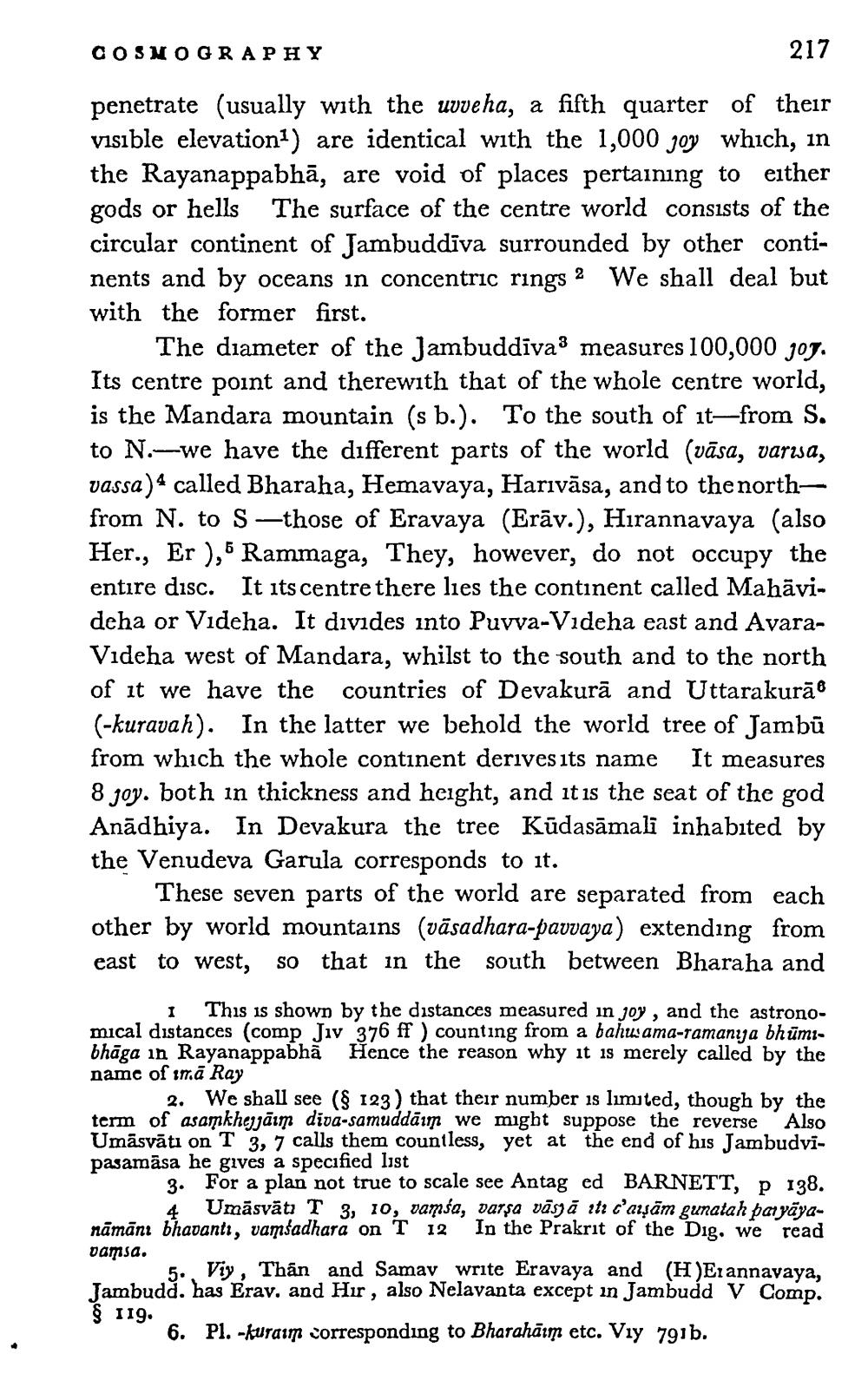________________
COSMOGRAPHY
217
penetrate (usually with the uvveha, a fifth quarter of their visible elevation?) are identical with the 1,000 joy which, in the Rayanappabhā, are void of places pertaining to either gods or hells The surface of the centre world consists of the circular continent of Jambuddīva surrounded by other continents and by oceans in concentric rings 2 We shall deal but with the former first.
The diameter of the Jambuddiva: measures 100,000 Jog, Its centre point and therewith that of the whole centre world, is the Mandara mountain (s b.). To the south of it—from S. to N.-we have the different parts of the world (vāsa, varusa, vassa) 4 called Bharaha, Hemavaya, Harivāsa, and to the northfrom N. to S—those of Eravaya (Erāv.), Hirannavaya (also Her., Er ), Rammaga, They, however, do not occupy the entire disc. It its centre there lies the continent called Mahāvideha or Videha. It divides into Puvva-Videha east and AvaraVideha west of Mandara, whilst to the south and to the north of it we have the countries of Devakurā and Uttarakurās (-kuravah). In the latter we behold the world tree of Jambū from which the whole continent derives its name It measures 8 joy. both in thickness and height, and it is the seat of the god Anādhiya. In Devakura the tree Kūdasāmali inhabited by the Venudeva Garula corresponds to it.
These seven parts of the world are separated from each other by world mountains (vāsadhara-pavvaya) extending from east to west, so that in the south between Bharaha and
1 This is shown by the distances measured in joy, and the astronomical distances (comp Jiv 376 ff ) counting from a bahu ama-ramanya bhūmibhāga in Rayanappabhã Hence the reason why it is merely called by the namc of imā Ray
2. We shall see ($ 123 ) that their number is limited, though by the term of asamkhejāim diva-samuddāım we might suppose the reverse Also Umāsvātı on T 3, 7 calls them countless, yet at the end of his Jambudvipasamāsa he gives a specified list
3. For a plan not true to scale see Antag ed BARNETT, P 138.
4 Umāsvāti T 3, 10, vamsa, varsa vasgā it? c'arşām gunatah paryayanāmānı bhavantı, vamsadhara on T 12 In the Prakrit of the Dig. we read vamsa.
5. Viy, Thân and Samay write Eravaya and (H)Erannavaya, Tambudd. has Eray, and Hır, also Nelavanta except in Jambudd V Comp. § 119.
6. Pl. -kurain corresponding to Bharahāım etc. V1y 791b.




